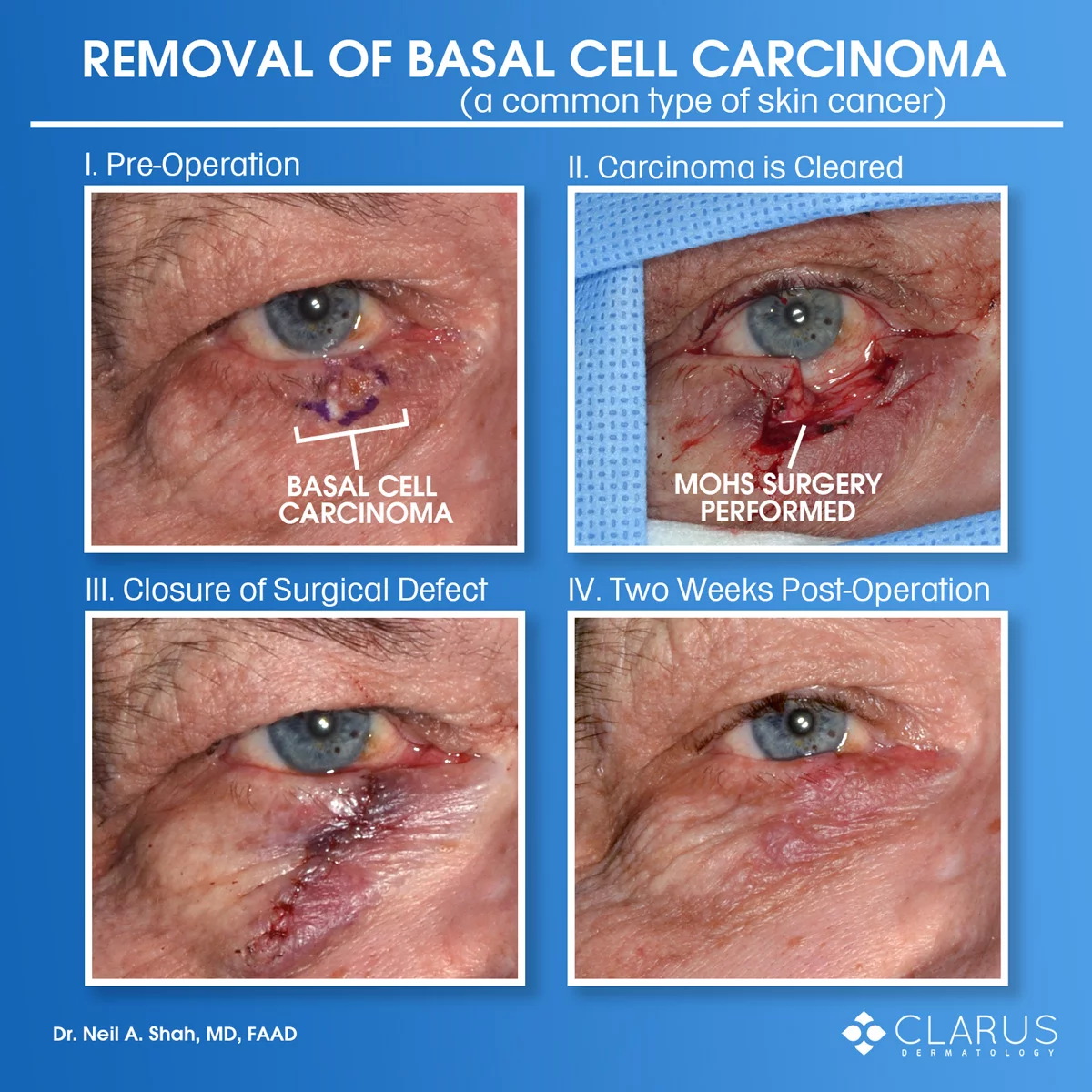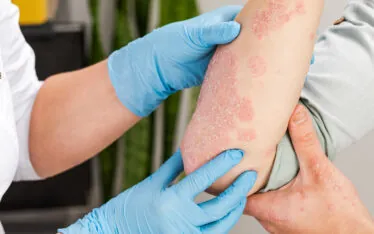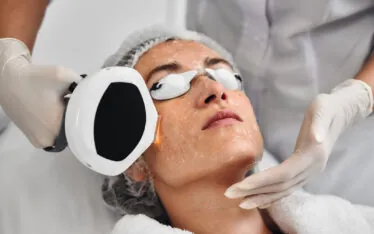
These images were taken from a patient who initially presented at Clarus Dermatology with a nonhealing sore near his eyelid. Dr. Craig Roelke, a partner at the clinic, obtained a biopsy and interpreted the sore as basal cell carcinoma – a common, slow-growing skin cancer.
When you have skin cancer in a high-risk area like the eyelid, the optimal treatment for the patient is Mohs surgery. Board-certified dermatologist Dr. Neil Shah successfully performed the surgery at the clinic and only local anesthesia was needed for the procedure.
The basal cell carcinoma tumor required two stages to completely clear. During the first stage, Dr. Shah removed some of the skin tissue from the patient, and he waited for it to process. Once done, board-certified dermatologist Dr. Shah looked at the microscopic slides of the skin and determined that more tissue needed to be taken during the second stage to clear the tumor.
In image II. (above) the carcinoma has been cleared and what you see is the post-clearance defect – the tumor after all of the skin cancer was removed. The area of the defect was closed with a method similar to what is called a pentagonal wedge resection of the eyelid.
The conjunctiva (the most internal layer of the eyelid) and the orbital septum were repaired using 6-0 gut sutures with the tied knots facing outwards to avoid scratching the cornea.
The tarsus, a firm band of tissue running across the eyelid, was then approximated using 5-0 Vicryl sutures. The orbicularis oculis muscle, which forms much of the core of the eyelid, was then closed with the 6-0 gut sutures.
The epidermis (the outer skin surface) was closed with 6-0 gut sutures using a method that pins down the sutures near the eyelid margin, to aim them towards the feet, so that they don’t flip upwards and irritate the eye. The sutures dissolve on their own (see the difference between image III. and IV. above) and the patient had no issues regarding dryness, itchiness, or irritation of the eye.
The Mohs surgery and closure of the defect are basically painless after local anesthesia. In terms of cost, the patient and their health insurance saved a tremendous amount of money by having the procedures done at Clarus Dermatology, an independent clinic.
The total cost to the patient’s insurance was $1,340. Alternatively, the price tag skyrockets if the patient has the operation performed at a hospital under general anesthesia. The fee to walk in the door is usually around $2,000 – $5,000 alone, with another $2,000 for general anesthesia.
This doesn’t even include the costs for surgical procedures (the removal, pathology, and reconstruction that was detailed above), which would be similar to the $1,340 that our clinic billed.
When it’s all said and done, the same procedures at a hospital would cost from around $5,340 to $8,343. That’s nearly 4 to 6 times the price that it would cost to have the skin cancer removed at our office-based clinic.
We at Clarus Dermatology believe that using local anesthesia is safer than general anesthesia. No preoperative medical evaluation is required. Blood thinners do not need to be stopped – their stoppage increases the risk of serious cardiac events like a heart attack or stroke.
At the end of the day, if a patient has skin cancer they owe it to themselves to have it evaluated by a board-certified dermatologist before deciding on any type of treatment. Choosing an independent clinic like Clarus Dermatology will provide patients with a high-quality, safe outcome at a lower cost than hospital-based or large health system alternatives.


